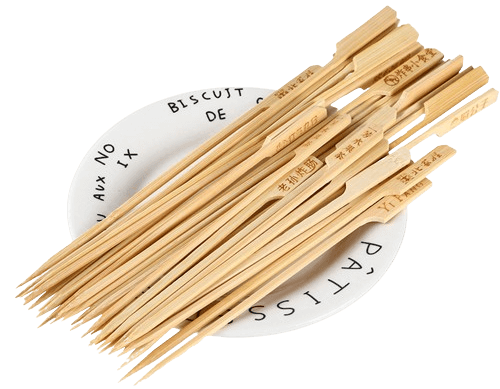Key Takeaways Table
| Aspect | Details |
|---|---|
| Topic | The origins and cultural journey of chopsticks across Asia |
| Focus | Historical significance, material evolution, and cultural variations |
| Relevance to Ecostix Global | Emphasizes the cultural and eco-conscious significance of bamboo chopsticks, aligning with brand values |
| Intended Audience | Individuals interested in cultural history, Asian traditions, and sustainable living |
| Key Points | Ancient origins, evolution in design, cultural adaptation, myths, and modern significance |
| Internal Links | Sustainable Practices |
Introduction
Chopsticks are not merely utensils but symbols of deep cultural heritage and culinary tradition in Asia. For over a millennium, these simple tools have been essential in the dining experiences across several nations, each adapting its unique form and etiquette. At Ecostix Global, we celebrate the history and sustainable future of bamboo chopsticks, which embody both tradition and a vision for a greener tomorrow.
The Ancient Origins of Chopsticks
The Birth of Chopsticks in China
Chopsticks were first used in China around 1200 B.C., starting as cooking tools made from twigs. These early versions were essential for fetching bits of food from boiling pots, not only for safety but for convenience. Over centuries, as the Chinese culinary culture evolved, so did the use of chopsticks. By 400 A.D., with the influence of Confucius’s non-violence teachings, which eschewed knives at the table, chopsticks had become prevalent as eating utensils.
Spread Across Asia
The spread of chopsticks across Asia is a testament to their practicality and cultural integration. By 500 A.D., they were common in Korea, Japan, and Vietnam. Each culture tailored the chopsticks to fit their societal norms and culinary needs, from the material—bamboo, wood, and metal, to distinctive styles such as the ornate Japanese Nuri-Bashi or the connected Korean Jeotgarak.
Chopsticks Across Asia: Cultural Adaptations and Variations
Variations by Region
- China: Typically blunt and longer, suited for communal pots.
- Japan: Aesthetic and shorter, with pointed ends ideal for precision, like picking up delicate pieces of sushi.
- Korea: Medium length with a flat shape, often metal, reflecting historical influences and modern tastes.
Cultural Significance
In each region, chopsticks carry more than functional value; they are imbued with etiquette and manners. For instance, in Japan, it is considered improper to point with chopsticks or to transfer food directly from one set of chopsticks to another—a practice associated with funerary rites.
Material Evolution and Craftsmanship
The Craft of Chopsticks
Over the millennia, the materials and craftsmanship of chopsticks have undergone significant refinement. Initially made from twigs, these eating tools evolved into crafted items made from various materials:
- Bamboo and Wood: Most commonly used due to their abundance, ease of carving, and sustainability.
- Metal: Used primarily in Korea, metal chopsticks reflect a unique aesthetic and are valued for their durability.
- Ivory, Jade, and Gold: Historically reserved for royalty and the elite, these materials symbolized status and offered unique aesthetic appeals.
Each material brought with it a set of characteristics that influenced how chopsticks were used and perceived. For example, bamboo chopsticks, like those produced by Ecostix Global, are not only sustainable but also provide a lightweight and natural feel that enhances the dining experience.
Innovation in Chopstick Design
The journey of chopsticks is also a story of innovation. In Japan, the advent of disposable chopsticks revolutionized how chopsticks were viewed and used worldwide. Their convenience and hygiene benefits helped popularize sushi and other forms of Japanese cuisine globally. Innovations such as textured tips for better grip and decorative designs that reflect cultural themes have kept chopstick use both modern and traditional.
Myths and Modern Perceptions
Chopstick Myths
Chopsticks are surrounded by an array of cultural myths and etiquettes that are as diverse as their designs. For instance:
- China: It is considered bad luck to drop chopsticks as it is believed to bring misfortune.
- Japan: Pointing with chopsticks is frowned upon, as it is seen as impolite.
- Korea: Placing chopsticks vertically in a bowl is associated with death and is therefore avoided.
These myths and practices underscore the deep cultural respect and etiquette linked to chopstick use, reflecting broader societal values and norms.
Modern Usage and Cultural Impact
In the contemporary world, chopsticks are not just tools for eating but symbols of a culturally rich practice that bridges the old and the new. Their use in various Asian cuisines around the globe has made them ambassadors of cultural exchange. Additionally, the rise of global cuisine and increased awareness of sustainable practices have led to a renewed interest in using environmentally friendly materials like bamboo.
Chopsticks Today: Global Reach and Cultural Significance
Chopsticks continue to be more than just eating utensils; they are a point of connection to cultural heritage and a symbol of simplicity and mindfulness in Asian dining traditions. As we see in the approach of Ecostix Global, combining traditional craftsmanship with sustainable practices brings chopsticks into the modern age, making them relevant and essential in today’s eco-conscious world.
The widespread use of chopsticks across the globe not only speaks to their functional appeal but also to their role in promoting sustainable eating habits and cultural appreciation. From their ancient origins to their modern-day incarnations, chopsticks continue to be a vital part of dining culture worldwide, celebrated for their simplicity and environmental benefits.
Conclusion
The journey of chopsticks from ancient tools to modern symbols of cultural identity and sustainability reflects their enduring appeal and adaptability. They remind us that even the simplest objects can carry profound cultural significance and contribute to a more sustainable world. At Ecostix Global, we are proud to be part of this tradition, providing high-quality bamboo chopsticks that honor their rich history while promoting a sustainable future.



